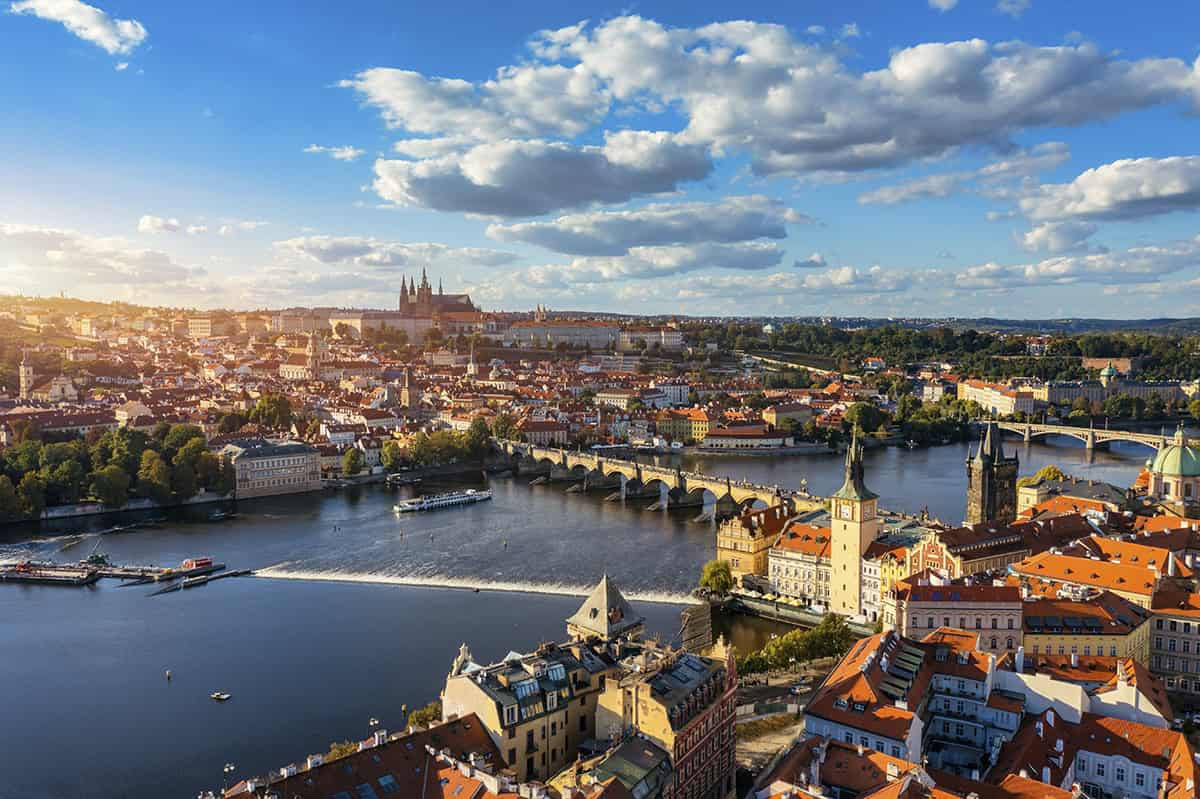A pro-business, center-right coalition government has taken concrete steps to shift the country toward green energy while extending the capabilities of CEZ, Czechia’s huge nuclear power company, reinforcing investors’ and business owners’ feelings of confidence. CEZ plans to boost nuclear power production as well as other clean energy sources. It follows a strategy called Energy for the Future focused on energy efficiency and new technologies, including renewables.
“There is a well-structured plan to reduce exposure to Russian energy against a backdrop of improving public finances, a loosening monetary policy, and a better economic performance,” says Malgorzata Krzywicka, associate director at Fitch Ratings, which recently raised its AA- rating outlook from negative to stable, Fitch’s highest rating in emerging Europe.
Although the capital city of Prague remains the wealthiest region, investment has spread throughout the country. And the country continues to benefit from EU cash infusions, including from the Cohesion Fund and the Recovery and Resilience Fund, established to aid recovery from the Covid-19 crisis.
After last year’s shallow recession, however, growth is expected to gradually accelerate but remain below potential. Czechia appears to have fallen into the middle-income trap; rising real wages and price increases likely have affected long-term competitiveness, says Krzywicka.
“Labor costs and prices are higher than in other countries in the region,” she notes, “and have led to economic imbalances. Right now, the Czech growth model has its limitations, with a lot of dependence on autos and heavy industry” and too-great reliance on recovery in Germany.
While the three main auto makers—Skoda (Germany), Hyundai (South Korea), and Toyota (Japan)—are shifting to electric car and battery production, the process has been slower than in other countries, including neighboring Hungary: a situation compounded by shortages of qualified labor and Czechia’s higher wage costs.
A recent Fitch study of nearshoring found that the republic lagged behind Romania and Poland on account of those countries’ larger populations and lower wage costs. And while it boasts high scores for corporate governance and transparency—Transparency International ranks it 41 out of 180 countries—it lags in business set-up time and administrative cost.
Moving To Higher-Value Production
Officials seem aware of these issues. The Czech Chamber of Commerce says the move away from heavy industry is key if GDP growth is to exceed the 1% to 2% range. Value-added is one of the lowest in the EU, with the republic ranking 24 out of the 27 member countries.
“If the economy is to continue to converge with Western countries, it will have to move toward higher value-added production,” Chamber of Commerce President Zdeněk Zajíček said last year. “In such a situation, [we could] remain competitive even with relatively more expensive labor.”
But the state must play a role bringing about the shift, he added: “In addition to strategic investments in energy, transport, data, and other infrastructure, investments in science, research, and education all play a crucial role. The state must also motivate companies to be innovative.”
The economy is already shifting focus toward new technologies, including artificial intelligence (AI) and nanotechnologies, medical research (including cancer), and research & development through both foreign direct investment and local start-ups, says Martin Partl, director of UK and Ireland operations at CzechInvest (the Investment and Business Development Agency of the Czech Republic).
“What matters isn’t quantity but quality,” he says. “The Czech Republic has a long tradition of industry working hand in hand with universities and technical institutes, especially in Prague and Brno, with their strong life-sciences departments, and in Liberec, with its focus on nanotechnologies. This, coupled with our central European location and long border with Germany, gives us a unique appeal.”
Optimistic observers say Czechia has the potential to become Central Europe’s Silicon Valley. Last year, a $400 million project was launched to transform Prague’s vast, 100-year-old Strahov Stadium into a new technologies hub, geared to attract cutting-edge investments and startups in such areas as robotics, AI, drones, and medical research and engineering.
ON Semiconductor (onsemi), the US technology and semiconductor maker, announced in June that it will invest some $2 billion over the next several years in its vertically integrated silicon carbide plant near Zlin. It is one of the largest-ever investments in the republic and one of the first investments in advanced semiconductor manufacturing in central Europe; among other things, it is expected to shift the automotive industry toward greener electromobility.
“The expansion would also enhance our production of intelligent power semiconductors, essential to helping ensure the EU [can] significantly reduce carbon emissions and its environmental impact,” says Hassane El-Khoury, president and CEO of onsemi.
